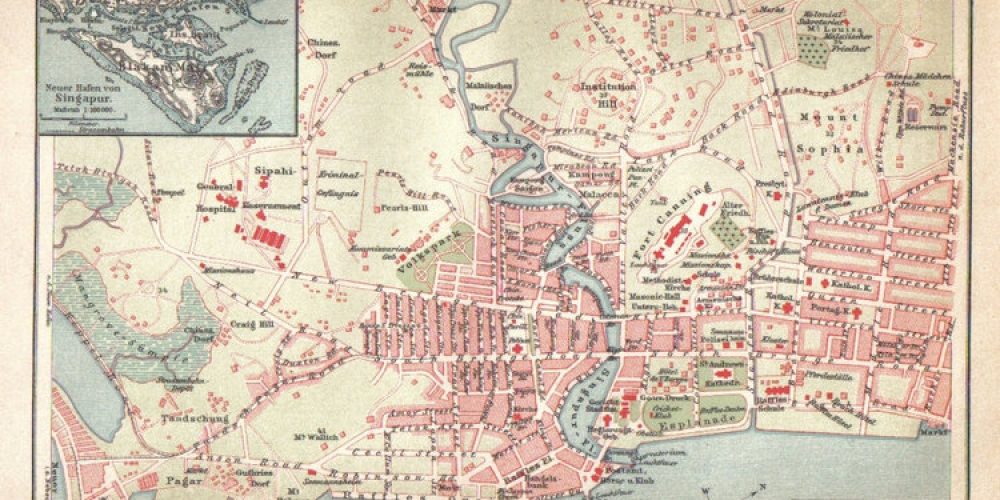The Republic of Singapore is a small city-state located South of Malaysia and North of Indonesia. Originally a highly rain forested island, the country is now densely urban. In 1324, a prince of the Srivijaya Empire founded the ancient city of Singapore. Between the 16th and 19th centuries it was a part of the Johor Sultanate.
In 1819, Sultan Hussein Shah of Johor signed a treaty with the British East India Company, allowing them to establish southern Singapore as a British trading post, and later the whole of Singapore in 1824. The British Empire adopted the historic networks of movement that Singapore had been apart of, which had connected the Persian Gulf to China for centuries.
For most of its history, Singapore has relied on regional and international trade, with a particular emphasis on transhipment (transferring goods from one vessel to another) and entrepot trade (re-packaging and re-distributing imported manufactured goods and regional produce). This economic structure meant that Singapore depended entirely on the goods and services of its trading partners and became a conduit through which supplies from Siam and Burma were redirected to Malayan and Netherlands industries.
As goods, labour and capital came in and out of Singapore, so did people, cultures, and information. An unrestrictive immigration policy was adopted by which the movement of traders and workers could move easily – this was a key element to the development of the trading hub. By the mid 1800s, the country was composed of Indians, Chinese, Malays, and Europeans. Community segregation took place as immigrants settled along ethnic lines. These strict boundaries between ethnic groups (and occupational groups) were reflected in the country’s municipal design, as seen in Little India and Chinatown. So although Singapore was a multi-cultural, there were strict social norms about the mixing of people from different economic and ethnic communities.
After World War Two, Singapore was separated from the rest of the Malay states because of political and demographic differences – Singaporeans being, and remaining, mostly Chinese. In 1965 Singapore was made independent from the British Empire, but found itself to be a nation-state that lacked a national identity. As scholar Tai-Yong Tan has written, a sense of indigeneity, religious, ethnic, and linguistic cohesion, and widespread social and political causes were all absent. This was because its position as a port city had created enclaves of distinct cultures in the population.
Singapore lacked, and still lacks, any viable natural resources aside from its waterways – models will notice this immediately when they see the prices in the grocery store. The government thus chose to define itself as a city-state with the whole world as its backyard. Since the late 20th century, Singapore has expanded its role as a port city to include to air – thereby sustaining its position as one of the busiest transportation hubs in the world. Singapore’s role as a key port city before, during, and since the British Empire, has been essential to how the country’s culture, economy, demography, and politics have developed. A commercial ethos continues to drive the country’s development, as demonstrated in its commitment to Free Trade Agreements, competitive tax rates, and growing luxury industries – the least of which not being the fashion and modelling industries.






